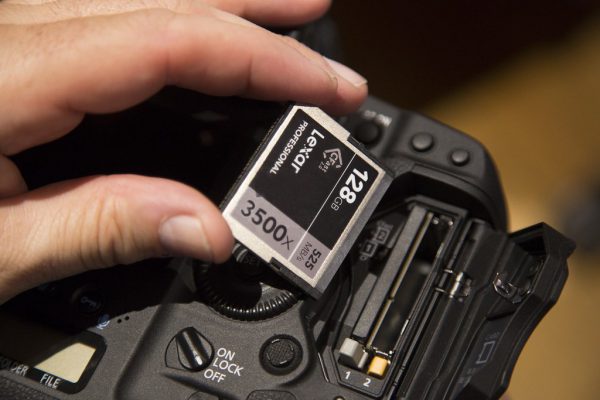The value of the ruble is often a reflection of Russia’s economic health, geopolitical relations, and trade activities, making it a critical factor for investors and businesses operating globally. The history of the ruble dates back to 1704, when the coin was standardized to 28 grams of silver during the rule of Peter the Great. A new standard was implemented on December 17, 1885, which did not affect the silver ruble but lowered the gold content to 1161 grams. Later, during the rule of Nicholas I, the silver ruble was declared a monetary unit and a principal instrument of payment, and banknotes became a payment support instrument. A second round of sanctions involved various Russian banks being removed from SWIFT, and direct sanctions on the Russian Central Bank.
What is the exchange rate for Ruble to US Dollars?
By understanding the history, denominations, and exchange rates of the Ruble, individuals can make informed decisions and avoid unnecessary complications when dealing with Rubles. While the Ruble is the official currency of Russia, the US Dollar (USD) and the Euro (EUR) are also widely accepted in major cities and tourist destinations. Many shops, restaurants, and hotels in these locations offer prices in both Rubles and USD or EUR. It is important to note that exchange rates for USD and EUR may vary and may be less favorable than those for Rubles. The ruble is the national currency of Russia and is used for all transactions within its borders. It has a long history and has undergone significant changes over time.
How to pay in Moscow?
- In several languages spoken in Russia and the former Soviet Union, the currency name has no etymological relation with ruble.
- In 1917, the Provisional Government issued treasury notes for 20 and 40 rubles.
- These coins are all commemorative and there are several themes, including federal subjects and ancient cities of Russia.
- Simply top up your card and convert to the currency you need in real time using the Wise app.
Ongoing political tensions have hurt the Russian economy, as the country has repeatedly faced sanctions from the international community. The value of the ruble along with many Russian companies plummeted after Russia began its invasion of Ukraine in February 2022. The exchange rate went up to 80 rubles per 1 US dollar in 2016, but it has been dropping during the last months. All Russian ruble banknotes are currently printed at the state-owned factory Goznak in Moscow, which was founded on 6 June 1919 and operated ever since.
Currency in Russia – Info about the Russian Rubel, ATMs and exchange rates
- The symbol is used on banknotes, coins, and in financial documents, and it is recognized worldwide as the symbol for the ruble.
- Banks also offer currency exchange services but may charge higher fees.
- It is important to note that exchange rates for USD and EUR may vary and may be less favorable than those for Rubles.
- Our currency rankings show that the most popular Russian Ruble exchange rate is the RUB to USD rate.
- These measures sent the value of the ruble plummeting to record lows against foreign currency, and briefly touching nearly 135 rubles to the dollar.
Foreign exchange rates are often changing and in most days minute by minute. Foreign exchange rates are always changing and in most days minute by minute. It’s wise to check the latest currency exchange rate for British Pound to Russian Ruble before ordering the Ruble you need for your up coming trip from Stirling Pound to Ruble Exchange Rate Today. In January 2014, Putin stated that the forex rate for ruble should be well balanced.
The Russian ruble significantly influences several former Soviet Union countries and neighboring regions. Countries like Belarus, Kazakhstan, and Armenia have strong economic ties with Russia, and the ruble is often used in cross-border trade within these regions. In some cases, the ruble is even accepted as a secondary currency in these countries, particularly in areas where Russian businesses dominate. In 1998, Russia redenominated the ruble, removing three zeros from its value to simplify transactions and restore confidence in the currency. Since then, the ruble has gradually stabilized and is now a fully convertible currency, although it is still subject to volatility due to its dependence on global energy markets and political factors. When you’re in Russia you’ll see the symbol ₽ written down in shops and on menus, and the currency code RUB used in exchange offices.
Regional influence of the ruble
From 2017 to today, the Russian currency and economy have been relatively stable, at least as far as the rouble goes. The rouble became the official currency of Russia in 1704, when Tsar Peter I started regular minting of the rouble in silver. The silver rouble was used during the 18th and 19th centuries. But, silver roubles were debased during the 18th century and paper money was primarily used in the latter half of the 19th century. However, the rouble was used as a designation of silver weight and not a full-fledged currency in its own right. Discover where to exchange money, what the best rates are and more with our handy guide.
The Ruble is widely accepted for all types of transactions in Russia, including shopping, dining, accommodation, and transportation. The ruble plays a key role in energy transactions, particularly in Russia’s oil and gas sector. As one of the largest energy producers in the world, Russia often uses its national currency in deals involving these crucial commodities. For example, some of Russia’s energy contracts with neighboring countries and international partners are settled in rubles, reducing dependence on foreign currencies like the U.S. dollar. In recent years, Russia has faced challenges in keeping inflation within target levels, especially during times of economic sanctions or falling oil prices. Geopolitical factors heavily influence the value of the Russian ruble.
The ruble is widely accepted in Russia, and most merchants and businesses prefer it over foreign currencies. The ruble collapsed in the second half of 2014, losing about half its value versus the U.S. dollar as global oil prices plunged. Economic and financial sanctions imposed by the U.S. and European Union on Russia in July 2014 over its invasion and annexation of Crimea also helped weaken it. To convert rubles to other currencies, you can use exchange offices, banks, or online currency converters. Exchange offices are widely available in Russia, especially in tourist areas.
However, if you are coming to large cities, there is no need to carry much cash with you as there are plenty of banks and bank machines all around. It would be better to divide your money and keep it in different places. Do not carry all your cash with you and never demonstrate how much you have got. While locals may let you pay in euros or dollars, such transactions are forbidden and you may get fined. And try not to exchange your money at airport kiosks because of the high fees and be careful of the more common tourist traps. However, from 2014 – 2016, the rouble experienced a sharp decline in value and caused a new financial crisis.
It may have been retained in English to avoid confusion with “rubble”. In general, American, and some Canadian, authors tend to use “ruble” while other English-speaking authors use “rouble”. In American English there is a tendency for older sources to use rouble and more recent ones to use ruble. However, usage is not consistent and major publications are known to use both (though usually preferring one or the other). But avoid using it in sketchy places, and keep it in a RFID protected wallet. The Russian currency is given out by the central bank (Банк России) which has forex compounding calculator its headquarters in Moscow.
Coins are minted in the Moscow Mint and at the Saint Petersburg Mint, which has been operating since 1724. In 1961, new State Treasury notes were introduced for 1, 3 and 5 rubles, along with new State Bank notes worth 10, 25, 50, and 100 rubles. In 1991, the State Bank took over production of 1, 3 and 5-ruble notes and also introduced 200, 500 and 1,000-ruble notes, although the 25-ruble note was no longer issued. In 1992, a final issue of notes was made bearing the name of the USSR before the Russian Federation introduced 5,000 and 10,000-ruble notes.
Travelers often ask whether it’s necessary to exchange your local currency to Russian Ruble in your home country prior to the trip. Since it’s not always possible to do that, we can reassure you that it’s not a problem to exchange money on the spot. Keep in mind though that rates in airports aren’t usually good, so it makes sense to exchange your cash somewhere in the city (in a local bank or currency exchange office). Before traveling to Russia it is handy to know a few things about the country including national currency and money in general.
RUB 200 BANKNOTE
Prior to this event, the USD/RUB exchange rate was around 30 rubles to the dollar; following the invasion it rose to rubles to dollars, where it remained for several years. The origins of the Russian ruble as a designation of silver weight can be traced to the 13th century. In 1704 Tsar Peter I (the Great) introduced the first regular minting of the ruble in silver. During the 18th century it was debased, and, after the middle of the 19th century, the rapidly depreciating paper money predominated in Russia’s circulation. In 1897 a gold ruble was substituted for the silver one, marking the change to a gold standard. Early in World War I, gold coins disappeared from circulation, and notes became inconvertible.
However, there are exchange offices where you can trade your Euro to Russian Ruble. But it’s much better to withdraw cash from a local ATM using a travel card that has zero fees. They use Russian Ruble (RUB), and here’s more info about ATMs, money and exchange rates before your trip. Russia is one of the major players on the world political stage. And all of these things are deeply intertwined with the economy.
As a result, the Russian government and the Central Bank of Russia have focused on diversifying the economy to reduce the ruble’s dependence on energy prices. Following the dissolution of the Soviet Union in 1991, the Russian ruble underwent significant changes. The collapse of the Soviet regime led to the introduction of a new ruble in 1992 to reflect Russia’s transition to a market economy. The early years of the modern ruble were marked by hyperinflation and economic instability as the country struggled to adapt to a free-market system. The ruble’s value plummeted as Russia faced severe economic challenges, including the devaluation of its currency in 1998 during the Russian financial crisis. The Soviet ruble emerged after the 1917 Russian Revolution, replacing the imperial ruble as the official currency of the Soviet Union.














